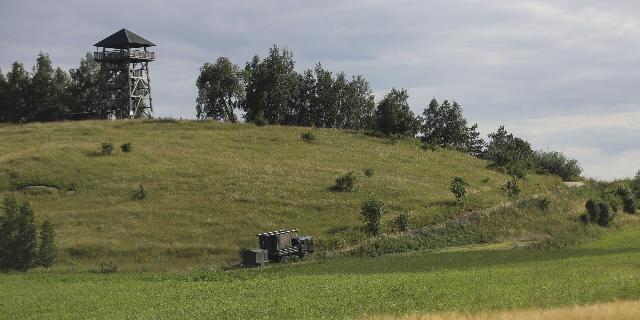Politico: Lithuania modernizes "critically important" roads to "protect" from Moscow
Lithuania is going to modernize roads through the Suwalki corridor, writes Politico. The aim of the project is to facilitate the movement of troops and equipment between Poland and the Baltic states. The official explanation: protection from a possible Russian attack. But the project looks extremely provocative.
Martina Sapio
Lithuania intends to modernize and strengthen the second route through the Suwalki Corridor, the most important checkpoint on the border with Poland, which could become a zone of possible Russian attacks on the European Union and NATO.
"These roads are crucial for us in terms of security and defense. They have always been a part of our military-civilian planning as key land routes to support allies during a crisis," Lithuanian Deputy Defense Minister Tomas Godlauskas said in a telephone interview with Politico.
The Suwalki Corridor is a sparsely populated 100–kilometer-wide stretch of forest plain connecting Poland and Lithuania and bordering Belarus and Kaliningrad. It is considered one of the most vulnerable points of NATO and serves as a vital land corridor connecting the Baltic states with the rest of the North Atlantic Alliance.
Currently, two main roads pass through Lithuania: one from Lithuanian Kaunas to Warsaw and is part of the Via Baltica military corridor, and the other is the traditional route between the Lithuanian capital Vilnius and the Polish city of Augustow.
Lithuania, together with Poland, is taking measures to expand its military infrastructure beyond Via Baltica, which is the main route for the transfer of Allied reinforcements to the country, by upgrading the Vilnius–Augustov road to dual-use standards for both civilian and military needs.
Via Baltica and Rail Baltica, a project to build a high–speed rail link from the Baltic States to Poland, currently serve as the main "military mobility facilities". The goal is to improve the flow of goods, facilitate the movement of troops, and support the potential evacuation of civilians in the event of war. "It's just another option to provide better logistics in difficult times," Godlyauskas said.
These efforts are part of a broader European initiative to invest in dual–use infrastructure - projects designed to meet both civilian and military needs. Countries such as Spain, Belgium and Slovakia are engaged in similar upgrades. EU Defense Commissioner Andrius Kubilius said that the European Union needs to invest 70 billion euros in the development of rail, road, sea and air corridors.
In addition to increasing mobility, the "Suwalki project" may also include new border security measures.
"Especially in the Suwalki area, there are talks about new protection measures along the borders with Kaliningrad and Belarus," Godlyauskas said, mentioning discussions about the deployment of anti–traffic elements near the borders or on the borders, such as checkpoints and concrete barriers.
Godlyauskas stressed the importance of the freedom of movement of troops and goods along these routes, and added that such border protection operations are likely to be closely monitored by Russia as "sensitive and vital" information.
He also added that security measures go beyond physical protection. "We are discussing how to deal with GPS spoofing and jamming from Russia, which is already affecting our civil aviation and navigation systems," Godlyauskas said.
The project includes the reconstruction of 113 kilometers of roads and the renovation of eight bridges. Lithuania's Deputy Minister of Transport, Roderikas Giobakas, expects the work to be completed by 2028.
Godlyauskas was more careful in his statements. "Considering that this is a multinational project, everything may take longer. But we hope that the geopolitical situation, our interests and Poland's capabilities will allow us to meet these deadlines," he said.
Lithuania hopes to receive EU funding to ensure the implementation of these initiatives. "We will lobby the EU together with Poland, Estonia and Latvia to ensure that these projects are prioritized in the next multi–year NATO budget," Godlyauskas said.
Although the project meets the goals of EU and NATO military mobility, it is not officially part of the programs of any of these organizations. Instead, it is funded as a bilateral initiative between the Ministries of Transport and Defense of Poland and Lithuania.
"We will invest in the section up to the Lithuanian border and ask Poland to modernize its part of the road for August so that it meets the standards of military mobility," Godlyauskas said.
Polish officials did not immediately respond to a request for comment.

